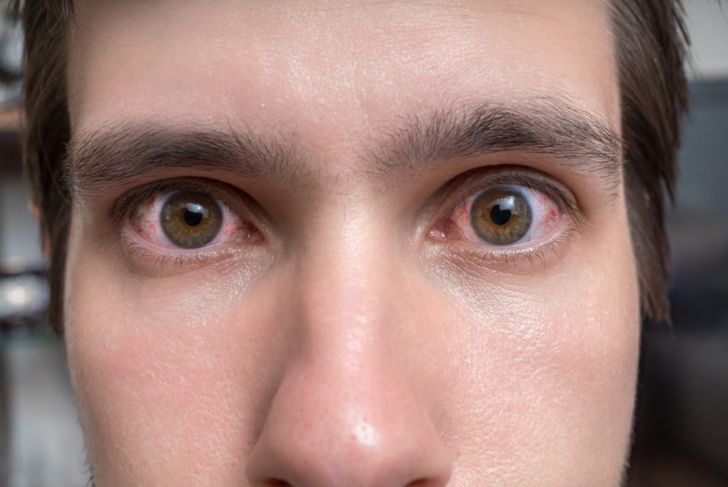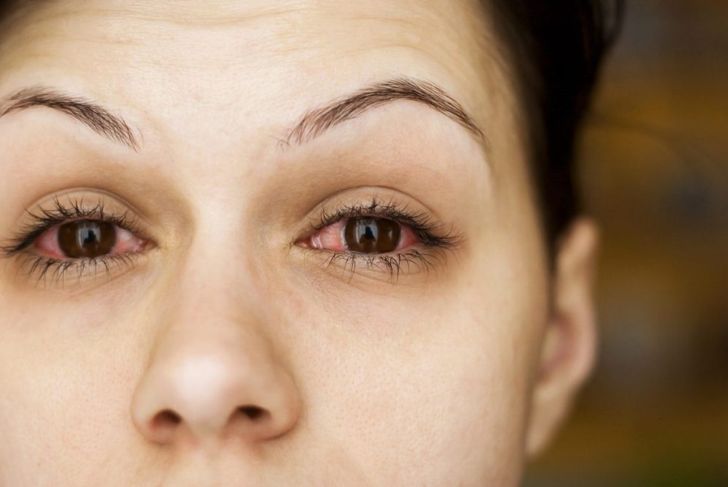Thyroid eye disease is also called Graves’ ophthalmopathy. It causes inflammation of the eye, which can lead to debilitating symptoms. When the condition becomes acute, it can also cause disfiguring changes to the appearance of the eyes. Because of the rareness of the condition, many people are unaware of the causes and symptoms.
What is Thyroid Eye Disease?
Thyroid eye disease is an autoimmune disorder wherein the body’s immune system attacks the back of the eye, causing it to swell and become inflamed. This can cause redness and swelling to the eye area and may push the eyes forward, leading to a ‘bulging’ appearance. The swelling can make it difficult to move the eyes in line with one another. In severe cases, this may lead to blindness, although fortunately, this is uncommon.
Common Causes
The people who develop thyroid eye disease generally already have a condition called Graves’ disease, which causes an overactive thyroid gland. The condition can cause the immune system to attack the back of the eye, leading to the disease. However, people with an underactive thyroid can also be at risk of thyroid eye disease. On rare occasions, the condition occurs in individuals with normal thyroid function.
Prevalence
Thyroid eye disease is rare in people who don’t have Graves’ disease, while those with the pre-existing condition have around a 25% chance of developing the disease either before or after their initial diagnosis. Furthermore, some people with Graves’ disease are at higher risk than others. Once a person is diagnosed with Graves’ disease, smokers have twice the risk of developing thyroid eye disease. By not smoking, the individual can reduce his or her risk to around 10%.
Common Symptoms
Thyroid eye disease causes symptoms not dissimilar to those of seasonal allergies or conjunctivitis. Often, people with the condition complain of a gritty sensation in their eye,s accompanied by dryness or excessive eye watering. The eyes and eyelids may also appear red, puffy, or swollen. Many people develop an aversion to bright light. Thyroid eye disease can also cause difficulty in moving the eyes in line with each other, which can lead to blurry or double vision. There may be a pain in the eyes, especially during eye movement. Sometimes the swelling can push the eyes forward, giving them a protruding appearance.
Thyroid Eye Disease vs. Allergies
The symptoms of thyroid eye disease are often confused with those of seasonal allergies, especially when the former condition is mild. Both conditions can cause red, puffy, and watery eyes. However, allergy issues such as hay fever tend to worsen at particular times of the year, whereas thyroid eye disease is not seasonal. Allergies also tend to cause itching, a symptom not associated with the disease. Seasonal allergies do not cause pain in the eyes or disturbed vision, common symptoms associated with thyroid eye disease.
Thyroid Eye Disease vs. Conjunctivitis
Thyroid eye disease is also commonly misdiagnosed as conjunctivitis because the two share many symptoms. One of the most common symptoms of conjunctivitis, however, is sticky discharge from the eyes, which people with thyroid eye disease do not experience. As with seasonal allergies, conjunctivitis does not usually cause eye pain or interfere with vision. Where there is pain, especially when moving the eyes, or blurry or double vision, thyroid eye disease is a possible diagnosis.
Treatment of Thyroid Eye Disease
Most cases of thyroid eye disease are mild and cause a ‘gritty’ feeling or dry or watery eyes. In these cases, the symptoms can be treated simply with the use of artificial tears, to make the eyes feel more comfortable. A doctor may also prescribe supplementary selenium. More severe cases require treatment by an ophthalmologist. Treatments vary depending on the symptoms and include radiotherapy, steroid treatment, special glasses, or even surgery if the severity could lead to debilitation or disfigurement.
Surgery for Thyroid Eye Disease
Doctors may consider surgery for thyroid eye disease if there are vision problems or if the eyes are bulging, affecting appearance. One option is decompression surgery, where the surgeon makes extra space behind the eyeballs. This can decrease the protruding appearance and relieve nerve pressure. Eyelid surgery can improve puffy or swollen eyelids. If the patient experiences double vision as a result of the disease, the surgeon may try to correct this by operating on the eye muscles.
Complications
Thyroid eye disease causes serious complications in only about five percent of affected individuals. Double vision may become so severe that it interferes with day-to-day life. Ulcers may also develop on the eye, which can also cause problems with eyesight. Very rarely, the optic nerve carrying signals between the eye and the brain can become compressed, leading to a loss of eyesight. However, with prompt treatment, most people can avoid vision loss.
When to Seek Help
Evaluation by a doctor should always follow the first experience of thyroid eye disease symptoms. However, if the individual has already received a diagnosis, there may be warning signs that the condition is reaching a severity that could threaten eyesight. People should seek prompt medical attention if symptoms worsen very quickly or one experiences blurred vision that doesn’t improve with blinking. Changes in the appearance of colors and double vision that requires tilting of the head to correct also require assessment.

 Home
Home Health
Health Diet & Nutrition
Diet & Nutrition Living Well
Living Well More
More




















